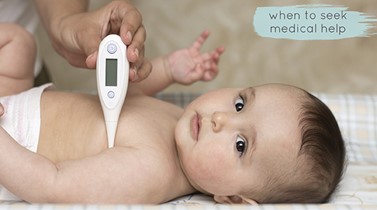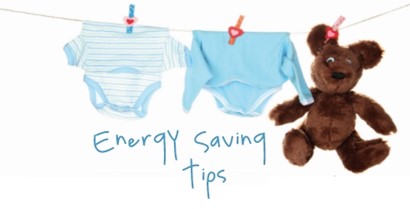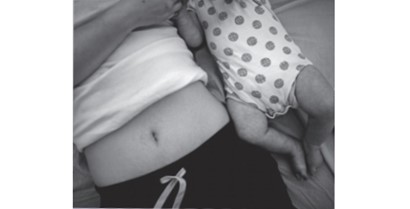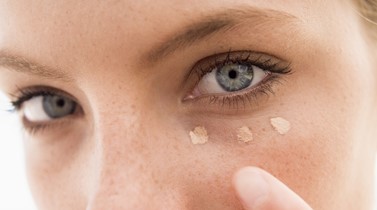Common breastfeeding problems - tips & advice

Breastfeeding is completely natural but it’s not without its challenges. Lactation consultant Maggie Morgan offers her advice on common problems.
Breastfeeding comes naturally.”
“It will make your toes curl when you start breastfeeding.”
“I hope your milk comes in quickly.”
There are often many confusing statements around establishing breastfeeding and everyone has an opinion. In my many years of practising as a midwife, Plunket nurse and lactation consultant I have seen a range of feeding experiences — from the mums who just pop their baby on the breast without any trouble at all to the mothers who struggle with a whole raft of problems. I’ve seen mothers who will battle through these issues and successfully breastfeed and those who give up at the first hurdle.
Yes, breastfeeding is a natural human function but, as I tell new parents, breastfeeding is also a learned skill for both mother and baby and takes practice—rather like learning a dance with a partner. This may take time and focus which is why it is essential women receive the support and help they need while establishing feeding and practising their dance.
Babies are programmed to find the breast following birth and, provided both mother and baby are alert, common practice is to place baby on mother’s tummy directly after birth allowing immediate skin-to-skin contact.
After about half an hour, baby will often start to move towards the breast instinctively and show searching movements in an attempt to latch on. Usually a midwife will assist the mother to latch the baby for her first feeds. Building on natural instincts, the latching process will imprint on baby’s brain and she will gradually learn what to do for subsequent feeds. Mothers may need help and advice on how to hold and position their babies, as this is pivotal for successful breastfeeding. The New Zealand Ministry of Health DVD Breastfeeding Naturally, is a great resource, as are lactation workshops and antenatal groups.
Common problems
Even with all the best intentions, preparation and advice, sometimes there are still hurdles to overcome in the early days of breastfeeding.
Flat or inverted nipples
During pregnancy, some women may be concerned that their nipples are flat, too large, too small or even inverted. If you are worried, ask your midwife to check your nipples, which will hopefully provide reassurance. Often, inverted nipples can be drawn out and once baby has established breastfeeding, the nipple shape shouldn’t affect the latch.
Inverted nipples may be a little more tender initially, but will become used to baby feeding. Silicone nipple shields may provide help with latching provided the milk supply has been established. It is important that the midwife helps assess whether shields will be useful or not. There are some commercial devices that may help draw out the nipples antenatally, but again, discuss these with your midwife.
Sore nipples
Many years ago, recommendations to “toughen up the nipples” included rubbing them with a brush, applying wheat germ oil and even exposing nipples to the sun.
Such preparations have thankfully gone out of fashion and we now understand that the key factor to combat pain is ensuring baby is correctly latched onto the nipple and areola. In the first few days this area may be a bit tender, rather like going barefoot after a winter in shoes, but gradually the discomfort should ease.
Some women find it hurts initially when their baby latches, but once baby is on the breast correctly and feeding, the discomfort eases. If it continues to hurt, then it is important to get the midwife to check the latch. It may require the baby to be taken off the breast and re-latched until a comfortable latch is achieved.
The Breastfeeding Naturally DVD, provided by the MOH or through your midwife, offers good diagrams, visuals and advice to help achieve a good latch. YouTube also has good clips on positioning and attachment.
If the nipple is damaged, the current recommendation is moist wound healing —that is not drying them out too much. If there is broken skin, impregnated gauze-type products from your pharmacy may help. Check with your health professional if your nipples are not healing.
Engorgement
Often women will be told, “You wait until the third day and your breasts will become like rocks, hard and painful.”
Luckily, these days with breastfeeding on demand encouraged, engorgement is not often seen. Where it does occur, the mum will notice full, painful, swollen breasts and baby may be unable to latch due to the areola and nipple being engorged and flattened. Women, understandably, feel miserable and frustrated and need assistance to help relieve the engorgement.
Most swelling usually resolves on its own with a baby latching well and draining the breast. However, if the breasts remain hard and swollen then a procedure called reverse pressure softening may help relieve the swelling. A midwife will show mothers how to do this by first hand-expressing some milk before feeding and then in some cases, by applying gentle, firm pressure on the areola around the nipple to help shift the swelling or oedema back towards the chest. Many women, our mothers’ generation especially, swear by placing cold cabbage leaves in your bra.
Blocked ducts
Blocked ducts can cause pain, redness and hard lumps over an area of the breast. Basically there is milk in the glands that hasn’t emptied due to a blockage or lack of drainage. This is not necessarily mastitis but unless the pressure is relieved, blocked ducts can lead to mastitis.
To help relieve blocked ducts, feeding the baby on the breast with the blocked duct is one of the simplest measures. While feeding, gently apply pressure over the blocked duct and, provided the baby is feeding well, you should feel the pressure relieving. If it doesn’t soften, applying a warm cloth and then gently massaging the area may help.
Occasionally there may be a blockage on the nipple itself and you will see a small white spot on the end of the nipple. Gentle pressure behind the nipple may help remove this and so drain that duct.
As a preventative measure, ensure there is no pressure on the breast from clothing or hands when breastfeeding. Sometimes, the slightest of pressure can block a duct.
Mastitis
Mastitis does not often occur in the first week or two of breastfeeding but may develop if there are unrelieved blocked ducts. The symptoms are similar to blocked ducts, but very quickly a woman will feel unwell with flu-like symptoms —shivering, a high temperature and red, painful areas on the breast. Mastitis usually only occurs in one breast and in one lobe of the breast. It can be inflammatory or infectious and, depending on the type, you may require antibiotics from your GP.
It is important to get on to the symptoms quickly by massaging the breast, feeding the baby on the affected side and trying to relieve the pressure. Paracetamol, which is safe to take while breastfeeding, may help relieve the pain and reduce fever. If symptoms persist, seek help from a health professional and ask if anti-inflammatory medication may be suitable for you.
It is vital to keep feeding the baby on the affected side, but if you are unable to put the baby to the breast, express to prevent milk stasis (milk staying within the breast tissue). The taste of the milk does not appear to bother the baby.
Low milk supply
One of the most common reasons women give up breastfeeding is the perception that they don’t have enough milk. The baby may be feeding very frequently and never seems satisfied. Cluster feeding in the first few weeks is very normal and often occurs in the evening. Not all babies feed three-to-four-hourly! Providing your baby is putting on weight, having plenty of wet and dirty nappies and sleeps well between feeds, then your supply should be enough for your baby. True low milk supply is rare but if you have concerns, check with your health professional.
Thrush
Occasionally, a woman might develop thrush on the nipples. The common symptoms are red, shiny, itchy nipples which can be painful both during breastfeeding and afterwards. Occasionally, if a mother has nipple thrush, the baby may have oral thrush so it is important to check both you and your baby. Again, your health professional can give you advice on treatment, as it is important to treat both mother and baby so each doesn’t re-infect the other. Antifungal drops for the baby and a topical treatment for the nipples are usually recommended.
Raynaud’s syndrome
Raynaud’s syndrome is a condition that affects the circulation of blood in extremities such as fingers and toes, but it can also affect nipples (also referred to as nipple vasospasm). The nipple can look white due to the constriction of blood vessels, which causes sharp, burning pain while feeding. It is not a common complaint and can be misdiagnosed, but the pain caused by the condition can be unbearable and extremely off-putting for women trying to breastfeed.
Cold temperatures make Raynaud’s worse so keeping the nipples warm is the first strategy. Warm compresses or wool breast pads may help. Breastmates.co.nz sell Raynaud’s Breastwarmers, specifically designed and made by a mum who suffered Raynaud’s herself.
If symptoms are not resolving, check with your health professional about medication.
Get help when you need it
In my experience, many first-time mothers experience some of the above problems when establishing breastfeeding. I often tell mothers that it can take up to 12 weeks for breastfeeding to settle down and become easier. If you are experiencing problems, get help early. Under the Baby Friendly Hospital Initiative in New Zealand, all maternity facilities are required to provide you with information about breastfeeding support in your community. Your midwife is there to help guide you through the early days of breastfeeding. If you need extra support, check out breastfeeding clinics, La Leche League, lactation consultants, breastfeeding advocates or any other breastfeeding support services in your area.
Once you are over these early hurdles, breastfeeding can become a very pleasurable, rewarding and easy way of feeding and bonding with your baby.
Maggie Morgan, RN, RM, MA, IBCLC, Plunket Certificate. Postgraduate Certificate in Maternal and Child Health (Australia). Currently working as a lactation consultant and clinical nurse educator in the Neonatal Unit in Wellington.

AS FEATURED IN ISSUE 25 OF OHbaby! MAGAZINE. CHECK OUT OTHER ARTICLES IN THIS ISSUE BELOW

















